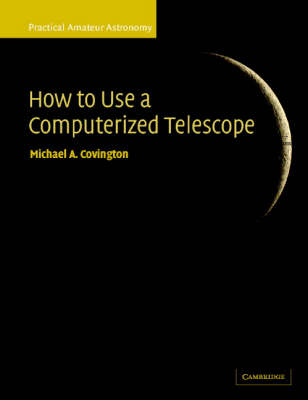Practical Amateur Astronomy 2 Volume Paperback Set
2 primary works
Volume 1
How to Use a Computerized Telescope is the first handbook that describes how to get your computerized telescope up and running, and how to embark on a program of observation. It explains in detail how the sky moves, how your telescope tracks it, and how to get the most out of any computerized telescope. Packed full of practical advice and tips for troubleshooting, it translates the manufacturers' technical jargon into easy-to-follow, step-by-step instructions, and includes many of the author's tried and tested observing techniques. Early chapters explain how to test your telescope's optics, choose eyepieces and accessories, and diagnose operational problems. The second half of the book then gives detailed instructions for three classic telescopes: the Meade LX200, Celestron NexStar 5 and 8, and Meade Autostar (ETX and LX90). Concentrating mainly on telescope operation and troubleshooting, it is the ideal companion to Celestial Objects for Modern Telescopes, also by Michael Covington.
Volume 2
Celestial Objects for Modern Telescopes: Volume 2
by Michael A. Covington
Published 26 September 2002
Based on field notes made by the author during his own career as an amateur astronomer, this unique guide covers both the traditional and novel approaches to studying the night sky. In addition to the more standard techniques, it discusses the latest modern resources available to today's astronomer, such as personal computers, the Internet, and computerized telescopes. It includes practical advice on aspects such as site selection and weather; provides the reader with detailed instructions for observing the Sun, Moon, planets, and all types of deep-sky objects; and it introduces newer specialities such as satellite observing and the use of astronomical databases. The book concludes with detailed information about 200 stars, clusters, nebulae, and galaxies, suitable for viewing with modest-sized telescopes under suburban conditions. Written to complement How to Use a Computerized Telescope, this book will also appeal to astronomers with more traditional equipment.

